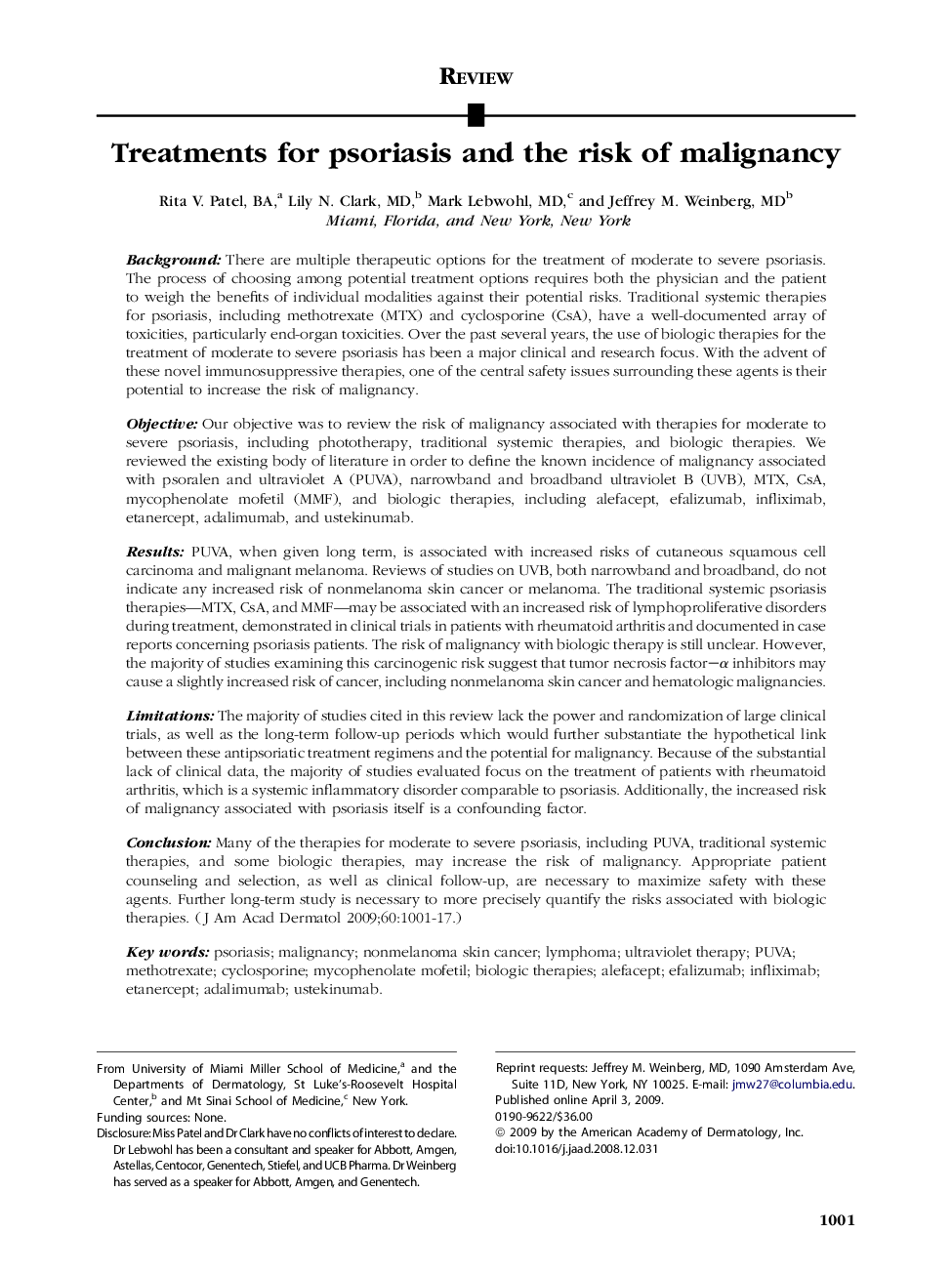| کد مقاله | کد نشریه | سال انتشار | مقاله انگلیسی | نسخه تمام متن |
|---|---|---|---|---|
| 3209225 | 1587607 | 2009 | 17 صفحه PDF | دانلود رایگان |

BackgroundThere are multiple therapeutic options for the treatment of moderate to severe psoriasis. The process of choosing among potential treatment options requires both the physician and the patient to weigh the benefits of individual modalities against their potential risks. Traditional systemic therapies for psoriasis, including methotrexate (MTX) and cyclosporine (CsA), have a well-documented array of toxicities, particularly end-organ toxicities. Over the past several years, the use of biologic therapies for the treatment of moderate to severe psoriasis has been a major clinical and research focus. With the advent of these novel immunosuppressive therapies, one of the central safety issues surrounding these agents is their potential to increase the risk of malignancy.ObjectiveOur objective was to review the risk of malignancy associated with therapies for moderate to severe psoriasis, including phototherapy, traditional systemic therapies, and biologic therapies. We reviewed the existing body of literature in order to define the known incidence of malignancy associated with psoralen and ultraviolet A (PUVA), narrowband and broadband ultraviolet B (UVB), MTX, CsA, mycophenolate mofetil (MMF), and biologic therapies, including alefacept, efalizumab, infliximab, etanercept, adalimumab, and ustekinumab.ResultsPUVA, when given long term, is associated with increased risks of cutaneous squamous cell carcinoma and malignant melanoma. Reviews of studies on UVB, both narrowband and broadband, do not indicate any increased risk of nonmelanoma skin cancer or melanoma. The traditional systemic psoriasis therapies—MTX, CsA, and MMF—may be associated with an increased risk of lymphoproliferative disorders during treatment, demonstrated in clinical trials in patients with rheumatoid arthritis and documented in case reports concerning psoriasis patients. The risk of malignancy with biologic therapy is still unclear. However, the majority of studies examining this carcinogenic risk suggest that tumor necrosis factor–α inhibitors may cause a slightly increased risk of cancer, including nonmelanoma skin cancer and hematologic malignancies.LimitationsThe majority of studies cited in this review lack the power and randomization of large clinical trials, as well as the long-term follow-up periods which would further substantiate the hypothetical link between these antipsoriatic treatment regimens and the potential for malignancy. Because of the substantial lack of clinical data, the majority of studies evaluated focus on the treatment of patients with rheumatoid arthritis, which is a systemic inflammatory disorder comparable to psoriasis. Additionally, the increased risk of malignancy associated with psoriasis itself is a confounding factor.ConclusionMany of the therapies for moderate to severe psoriasis, including PUVA, traditional systemic therapies, and some biologic therapies, may increase the risk of malignancy. Appropriate patient counseling and selection, as well as clinical follow-up, are necessary to maximize safety with these agents. Further long-term study is necessary to more precisely quantify the risks associated with biologic therapies.
Journal: Journal of the American Academy of Dermatology - Volume 60, Issue 6, June 2009, Pages 1001–1017